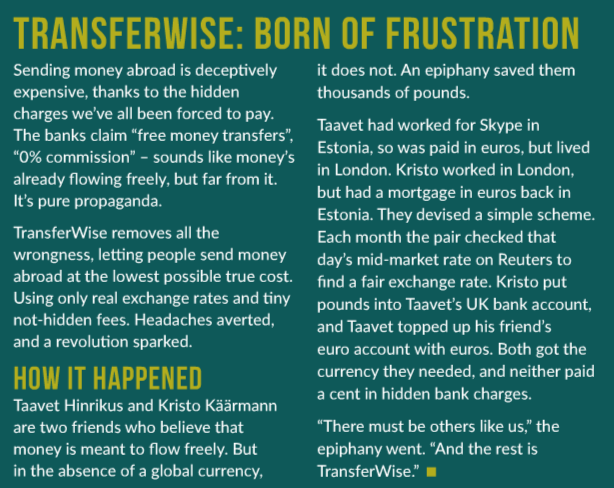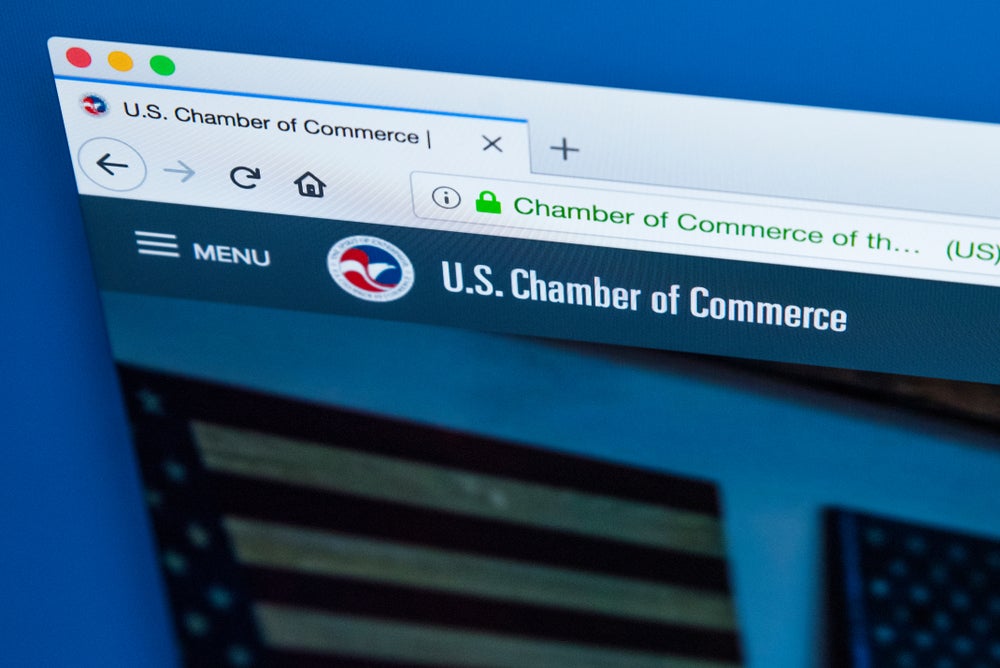Digital remittance firm TransferWise is not just a fintech unicorn: in its latest financial year, it moved into profit. The business, whose stated aim is to bring the cost of remittances down to nearly zero, says it has now proved its model is profitable. Robin Arnfield talks to bank partnerships technical lead James Ferretti
In September 2018, TransferWise announced that its annual revenues had risen by 75% in the year to 31 March 2018 to £117m ($151m), from £66m.
TransferWise posted net profit after tax of £6.2m for the year to 31 March 2018. After a tax credit of £6.99m, TransferWise posted net profit of £6.19m last fiscal year. Operating profit rose to £9.5m in fiscal 2018, after a loss of £519,000 in fiscal 2017.
TransferWise has seen significant growth, particularly since launching its borderless account for consumers in April 2018. This follows the 2017 launch of a business version of the borderless account.
40 currencies
TransferWise’s borderless account lets customers hold over 40 different currencies and send and spend money abroad using their contactless TransferWise debit Mastercard.
Account-holders receive Australian, UK, European and US bank account numbers. As of September 2018, over 2 million transactions had been made on TransferWise debit cards, with a US debit card launch planned for the fourth quarter of 2018.
How well do you really know your competitors?
Access the most comprehensive Company Profiles on the market, powered by GlobalData. Save hours of research. Gain competitive edge.

Thank you!
Your download email will arrive shortly
Not ready to buy yet? Download a free sample
We are confident about the unique quality of our Company Profiles. However, we want you to make the most beneficial decision for your business, so we offer a free sample that you can download by submitting the below form
By GlobalDataGlobally, TransferWise’s 4 million customers use the platform to transfer $4bn every month. The US remains a major corridor, with customers moving over $19bn into and out of the US since TransferWise’s launch in 2011.
“TransferWise doesn’t view itself as a remittance company,” says senior Aite Group analyst Talie Baker.
“It’s targeting a different segment of the population, whereas firms such as Paysend, InstaRem, XendPay, WorldRemit, Xoom and TransferGo target migrant workers and focus on frequent, small-value transfers.
“Since inception, TransferWise has focused on a more affluent segment of the population – people who travel internationally and need to frequently exchange money. It’s more of a marketplace: ‘I have euros and need dollars. You have dollars and need euros. The app connects us, and we exchange funds more cheaply than a bank would do for us.’”
Competition
James Ferretti, bank partnerships technical lead at TransferWise, recognises that the company has to remain competitive with other digital remittance firms such as WorldRemit, InstaRem, Xoom, TransferGo and Paysend.
“Since TransferWise’s launch, there have always been other digital money-transfer firms on the market,” he says.
“Some provide a fair service, but many still hide their fees in poor exchange rates, and lots are almost as expensive as the banks. Competition in the market is a good thing and can result in more choice for consumers, but we believe new entrants should aim to meet new standards of transparent pricing, speed and convenience for the benefit of customers.”
Ferretti says TransferWise’s vision is to make money move around the world as fast and as cheaply as email. “We call that vision our Mission Zero,” he explains.
“There’s really no reason people have to pay so much to send bits and bytes across borders. We’re the cheapest, fastest provider for most people who need to send money overseas, but we still try to lower prices whenever we manage to cut our costs through innovation or economies of scale.”
In 2018, TransferWise has had 30 price drops to date, and once or twice has also had to raise prices where costs rose, Ferretti says.
“The important thing is that customers should pay for the service they receive – no cross-subsidisation, no hidden charges, no window-dressing of the product as ‘free’. Just one simple up-front fee.”
B2B
Ferretti believes businesses have a huge need for services such as TransferWise.
“In the UK, Capital Economics has found that SMEs lose £4bn a year in exchange rate mark-ups when they send money abroad,” he says. “That’s all hidden fees on top of the upfront charge their bank told them about.
“Since 2015, we’ve worked on a suite of products to meet the needs of businesses, from sole traders to bigger firms, including the launch of our borderless account and new features such as batch payments. It’s a work in progress, but things are going well. Currently, we’re adding 5,000 new, active business accounts every week.”
The TransferWise borderless account is a huge focus area for the company right now, says Ferretti. “It’s the first time anyone has been able to get real bank details in sterling, euros, US dollars and Australian dollars in minutes, without paying extortionate fees to their bank for a specialist account,” he says.
“We’ve accepted over £2bn in customer deposits since we launched the business borderless account in 2017, and the borderless account is live for consumers and businesses across Europe, the US and Australia so far. We launched the debit card attached to the account in Europe in April 2018, and plan to roll that out in the US and further afield from 2019.”
API Integration
Instead of competing with them, TransferWise has been signing deals with banks to ensure that their customers can send and receive money via its platform from the bank’s digital app.
In June 2018, TransferWise announced API partnerships with BPCE Group in France and UK challenger bank Monzo, in addition to existing API partnerships with Germany’s N26 and Estonia’s LHV.
Its API integration with BPCE goes live in early 2019, while Monzo has already added a TransferWise tab to its banking app. Ferretti says that, since launching its Monzo API integration in June, TransferWise has sent over £10m overseas for Monzo customers.
“The Monzo partnership is growing about 200% month on month right now,” he says.
“The BPCE partnership will be launched to BPCE’s 15 million customers in 2019. That’s our first incumbent banking partnership and it will be a game changer in France. Overnight, BPCE will become the cheapest bank in the market for money transfers.”
Baker is convinced that TransferWise’s API partnerships with banks is a brilliant business move. “Banks have got out of the remittance business as regulation made it unprofitable, even though banks realise their customers need the service,” she says.
“This type of partnership allows banks to offer the service to their clients, while offloading the risk and cost of compliance to TransferWise. While TransferWise gets more people using its platform, the banks offer a service and make some money while maintaining the customer relationship. It’s a great way for banks to stay in the remittance biz.” TransferWise has additional bank partnerships in the pipeline, Ferretti says.
Faster payments
One of TransferWise’s stated aims is to speed up international remittances; to do this, it needs direct access to faster payments systems in multiple markets.
In October 2018, TransferWise CEO Kristo Käärmann told Reuters that the firm plans to connect to new instant payments infrastructure in Hong Kong and Singapore. He added that TransferWise was applying for a stored-value facility licence in Hong Kong so it can connect to Hong Kong’s Faster Payments System.
TransferWise is part of a Monetary Authority of Singapore working group examining how non-banks can connect to Singapore’ bank-only Fast and Secure Transfers system, Reuters says. In April 2018, TransferWise secured authorisation to hold a settlement account in the Bank of England’s Real Time Gross Settlement system, making it the first nonbank member to gain direct access to the UK’s Faster Payments Scheme.
“We’re calling on regulators and central banks around the world to make it possible [for us to join faster payments schemes],” says Ferretti.
“Right now, the Bank of England is the only central bank in a major market to allow fintechs access to settlement accounts and direct membership of a faster payment scheme.” Ferretti says direct access to faster payments schemes is hugely important for TransferWise.
“It means we can compete on a level playing field with the incumbents, and offer a faster, more efficient service for customers by cutting out the middle man,” he says.
“In the long term it will enable us to lower costs too. Other central banks around the world are following the UK’s lead – Hong Kong, Singapore, Australia and the EU – but we would love the US to consider the same approach.”








